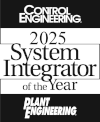The Project: Expand a Production Line to Meet Increased Steel Demand
A metal processing facility was developing a project to install a Pig Iron Caster with the goal of producing half a million tons of pig iron per year to meet rising demand and prices. They would be utilizing the existing blast furnace to feed this new installation, but would need to source the Pig Iron Caster, Bag House components and other heavy machinery, while simultaneously sourcing all required permits.
Once received and installed, the equipment would need to have all of the process control systems integrated and centralized through the control of an integrated HMI. This is where E Tech Group was called upon to function as what they had originally termed an “Umbrella Integrator”, helping bring all these disparate systems together and create a seamless user experience for field operators.
However, as with many control system expansions and upgrades, it quickly evolved into much more.
The Challenge: Overcome Supply Chain Delays & a Fast-Tracked Timeline
At a time when supply chain issues plagued most if not all industries, getting a single piece of machinery to install, test and move to the next as they would in front-end loading (FEL) wasn’t practical to maintain the identified timeline. So they pivoted to a fast-track approach.
Fast-tracking the automation system expansion meant we had less time to review and less engineering documentation available, as the pig caster and baghouse needed to be ordered in parallel. This approach, as opposed to the traditional, rigorous review process that preceded the ordering of any large equipment, meant ensuring minimal alterations during installation would pose a challenge, to say the least.
In order to best navigate the intersection of supply chain woes and a ticking clock, as construction began, it did so with limited and early design while detail engineering was still being drafted. This meant that extra care had to be taken with the early design to avoid any major disruption.
Due to the nature of the project, the schedule unavoidably continued to undergo incremental changes as potential challenges were identified… keeping all stakeholders up to date, open and constant communication was necessary to mitigate any delays. Thankfully, this type of communication is something E Tech Group brings to every automation project we undertake, so even in a constrained timeline and long waits on equipment, we were in our wheelhouse.
Changing Roles: From Umbrella Integrator to Hybrid Project Manager & Main Automation Partner
While E Tech Group was originally contracted to work within the role of an “Umbrella Integrator”, perpetually evolving project conditions would dictate that the team worked in a flexible role that transformed into more of a Hybrid Project Manager and Main Automation Partner.
Very early on, the client determined that the original plan for the critical ladle tilting component, controlling the pour rate of molten steel, would not work in its manual configuration. Our team worked quickly to create an automated solution for this piece that would allow it to function as required.
Recognizing E Tech Group’s ability to lead and problem solve, the team was asked to work in the interest of the client to not only complete what we were originally contracted but move the project forward to the finish.
The Solution: (Always) Go Above & Beyond for the Client
Control panel design should always be informed by the to-be operators; it ensures the client is able to take full advantage the advanced automation solution implemented by our team. Our automation engineers worked with all of the field operators to better understand their wants and needs. This helped develop the scope necessary in the creation and integration of the control solution they would all be using, ensuring it felt like one cohesive system.
Using the defined scope, the on-site team took points, evaluated and worked with the individual vendors. They then reviewed the vendor’s individual prints, programs and HMIs. The team also helped facilitate factory and site acceptance testing and provided onsite resources for other vendors for dry testing.
All of this fell outside of our original scope of work, but allowed the team to continue building trust with the client and functioning as a main automation partner for the length of this project.
The Result: Open Communication & Client Partnership Drove Success
Due to the nature of this project, the escalated timeline, supply chain issues, and shorter-than-normal lead time for engineering design, there were a number of changes that needed to be made. Our team was not only effective in quickly adapting in moving this project to the finish line but also in communicating changes in the timeline that would impact deliverables.
The client was truly appreciative of how the team and E Tech Group as a whole worked with them in helping make the best decision in the interest of the project while simultaneously executing and helping get them operational.
Pouring Metal Ahead of Schedule!
Because the team actively mitigated risk and delays, quickly communicated changes, and worked steadily to maintain this very escalated timeline, the client was able to pour metal almost a quarter ahead of schedule.
Our team truly performed outside their traditional scope of work, above expectation, and was there for the client from beginning to end. This is why they were asked to stay onsite and continue to help identify potential risks and opportunities. E Tech Group continues to mitigate unforeseen risks and help capitalize on opportunities that have yet to be unlocked in their machinery.





